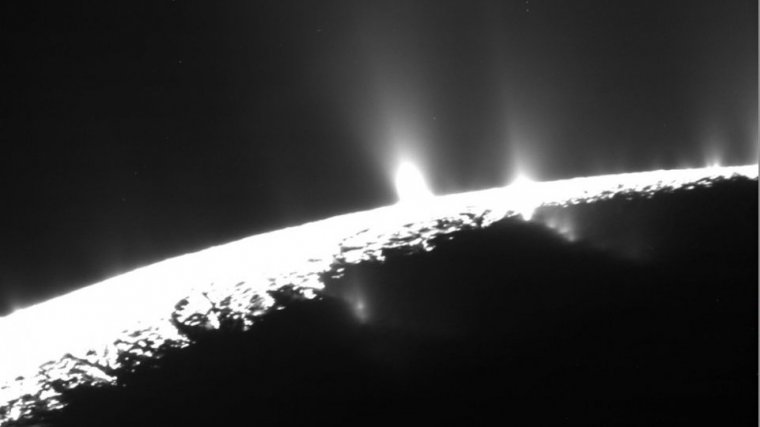| News / Space News |
Saturn Moon's Activity Could Be 'Curtain Eruptions'
NASA | MAY 10, 2015
New research using data from NASA's Cassini mission suggests most of the eruptions from Saturn's moon Enceladus might be diffuse curtains rather than discrete jets. Many features that appear to be individual jets of material erupting along the length of prominent fractures in the moon's south polar region might be phantoms created by an optical illusion, according to the new study.

Much of the eruption activity on the surface of Saturn's moon Enceladus could be in the form of broad, curtain-like eruptions, rather than discrete jets. ![]()
In analyzing Cassini's images of the eruptions on Enceladus, the researchers took particular note of the faint background glow present in most images. The brightest eruption features, which appear to be discrete jets, look to them to be superimposed intermittently upon this background structure.
The researchers modeled eruptions on Enceladus as uniform curtains along the tiger stripe fractures. They found that phantom brightness enhancements appear in places where the viewer is looking through a "fold" in the curtain. The folds exist because the fractures in Enceladus' surface are more wavy than perfectly straight. The researchers think this optical illusion is responsible for most of what appear to be individual jets.
Curtain eruptions occur on Earth where molten rock, or magma, gushes out of a deep fracture.
YOU MAY ALSO LIKE





